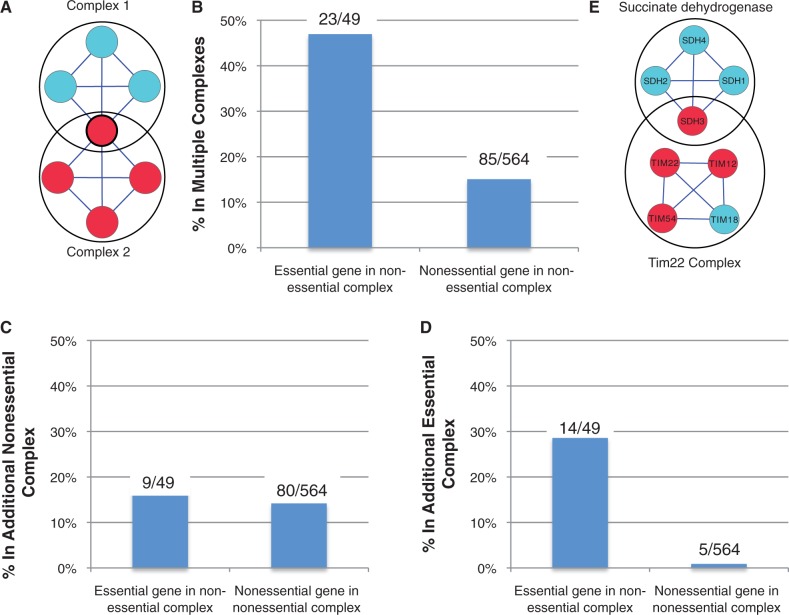Fig. 3.—
Moonlighting explains essential proteins in nonessential complexes. (A) Cartoon example of a moonlighting protein present in both Complex 1 and Complex 2. Colors as in figure 2. (B) Essential genes in nonessential complexes are more likely to belong to multiple complexes than nonessential genes in nonessential complexes (P = 6.3 × 10−7 two-sided Fisher’s exact test). Complexes with <40% essential genes are considered nonessential, and the cytosolic ribosomal subunits genes are excluded from this analysis, as their behavior is better explained by gene duplication. Labels above bars indicate actual gene counts. (C) Essential genes in nonessential complexes are no more likely to belong to an additional nonessential complex than nonessential genes in nonessential complexes (P = 0.40 two-sided Fisher’s exact test). Details as in (B). (D) Essential genes in nonessential complexes are also more likely to belong to an essential complex than nonessential genes in nonessential complexes (P = 5.67 × 10−13 two-sided Fisher’s exact test). Details as in (B). (E) SDH3, the only essential member of the succinate dehydrogenase complex, has recently been identified as a having an additional role as part of the essential Tim22 complex.

